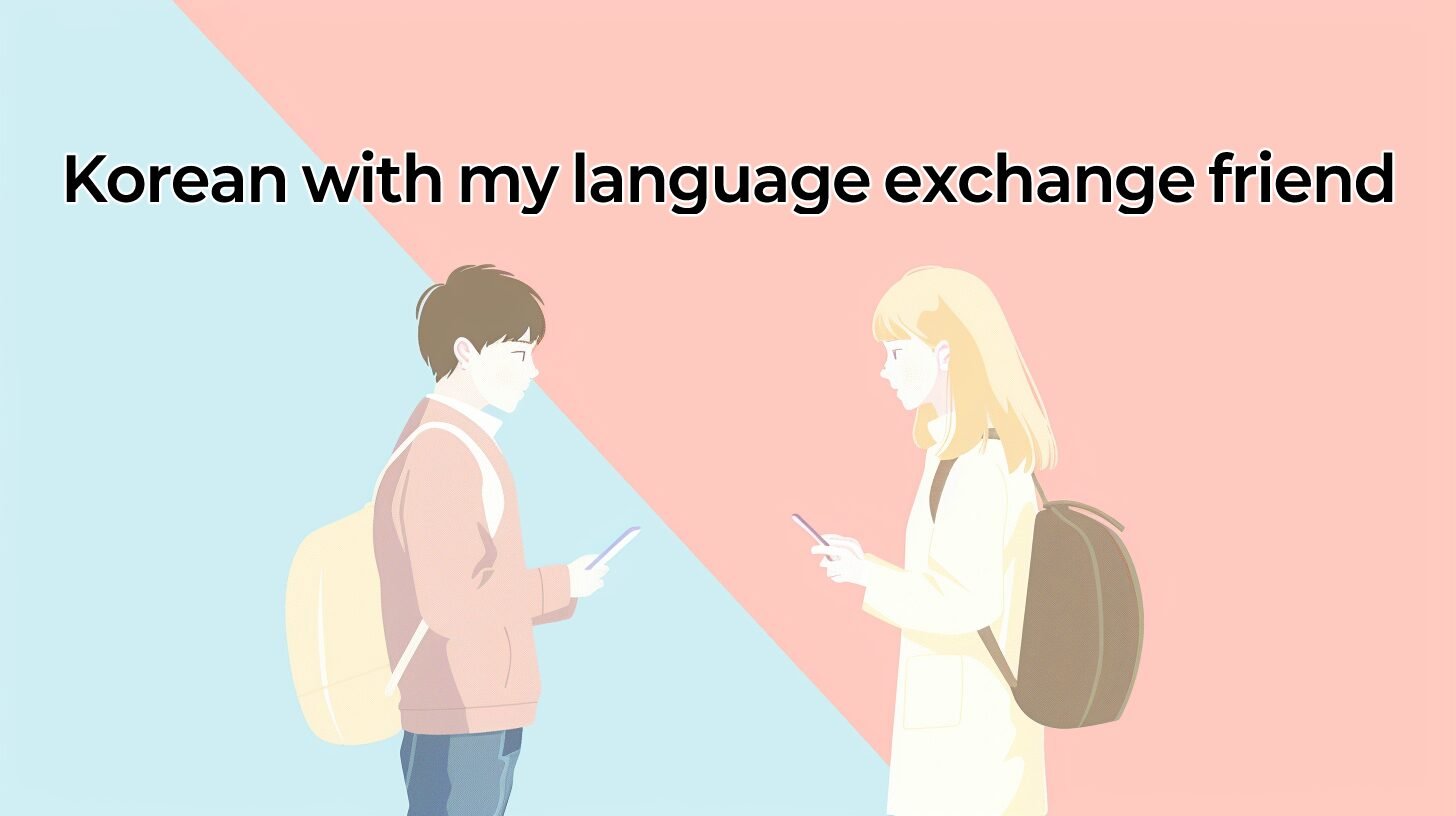Ep.1: First Greeting on a Language Exchange App
Welcome back to Korean With My Language Exchange Friend!
In this episode, we’ll look at the very first conversation you might have when meeting a new Korean friend on a language exchange app. You’ll learn how to greet, introduce yourself, and say where you are from.
🗨 1. Dialogue
Emily: 안녕하세요. 저는 Emily예요. 한국어를 공부하고 있어요.
지훈: 안녕하세요, Emily 씨. 반가워요!
Emily: 반가워요, 지훈 씨. 저는 미국 뉴욕에서 왔어요.
지훈: 저도 반가워요. 저는 인천 사람이에요.
(English Translation)
Emily: Hello. I’m Emily. I’m studying Korean.
지훈: Hello, Emily. Nice to meet you!
Emily: Nice to meet you, Jihoon. I’m from New York, USA.
지훈: Nice to meet you too. I’m from Incheon.
📖 2. Key Expressions
- 안녕하세요. → “Hello.” (polite)
- 저는 ___예요/이에요. → “I am ___.”
- 한국어를 공부하고 있어요. → “I’m studying Korean.”
- 반가워요. → “Nice to meet you.”
- 저는 ___에서 왔어요. → “I’m from ___.”
- 저는 ___ 사람이에요. → “I’m from ___ / I’m a ___ person.”
📚 3. Grammar & Notes
(1) 예요 / 이에요
- Korean “to be” ending in polite speech.
- If the word ends with a vowel(without a batichim) → 예요
- Emily(에밀리)예요.
- If the word ends with a consonant(with a batichim) → 이에요
- 지훈이에요.
(2) ~고 있어요
- Progressive tense = “am/are doing.”
- 공부하다 (to study) → 공부하고 있어요 (I’m studying).
(3) 씨
- A polite suffix added after a name.
- Emily 씨 = Ms. Emily / Emily (in polite form).
(4) Ways to say where you are from
- 저는 ___에서 왔어요.
- Literally: “I came from ___.”
- Most common in introductions.
- Example: 저는 미국 뉴욕에서 왔어요. → I’m from New York, USA.
- 저는 ___ 사람이에요.
- Literally: “I am a ___ person.”
- Stronger sense of identity or origin.
- Works with both countries and cities.
- Example: 저는 인천 사람이에요. → I’m from Incheon.
- Example: 저는 한국 사람이에요. → I’m Korean.
👉 Difference in nuance:
- 저는 인천에서 왔어요. → situational, neutral, good for first-time introductions.
- 저는 인천 사람이에요. → identity-based, emphasizes where you belong or grew up.
Both are correct, and often interchangeable in daily conversation.
✍️ 4. Practice
Now try making your own introduction.
- 안녕하세요. 저는 [Your Name]이에요/예요.
- 한국어를 공부하고 있어요.
- 반가워요!
- 저는 [City/Country]에서 왔어요.
- 저는 [City/Country] 사람이에요.
Example:
안녕하세요. 저는 John이에요.
한국어를 공부하고 있어요.
반가워요!
저는 미국 뉴욕에서 왔어요.
저는 뉴욕 사람이에요.
🔎 5. Asking Names
In real conversations, sometimes you already know each other’s names from the app profile. But if not, you can ask politely:
- 이름이 뭐예요? → “What’s your name?”
- 제 이름은 ___이에요/예요. → “My name is ___.”
👉 Example exchange:
- A: 이름이 뭐예요? (What’s your name?)
- B: 제 이름은 지훈이에요. (My name is Jihoon.)
💡 Note: Koreans often skip “제 이름은…” and simply say 저는 지훈이에요. Both are correct and natural.
🌍 6. Wrap-up
In your very first message on a language exchange app, you can:
- Greet politely → 안녕하세요.
- Introduce your name → 저는 ___예요/이에요.
- Say you’re studying Korean → 한국어를 공부하고 있어요.
- Show friendliness → 반가워요!
- Add your origin → 저는 ___에서 왔어요 / 저는 ___ 사람이에요.
👉 Try sending a message just like Emily did in the dialogue, and see how your new Korean friend responds!
Check out these posts

Leave a Reply